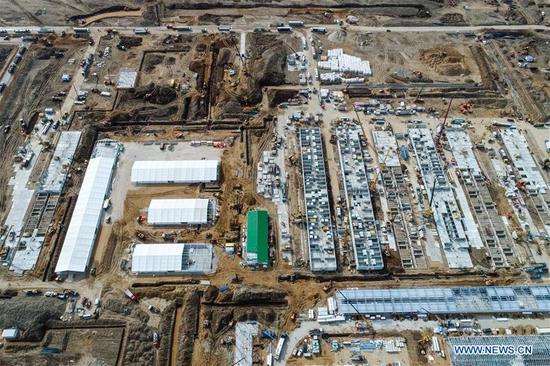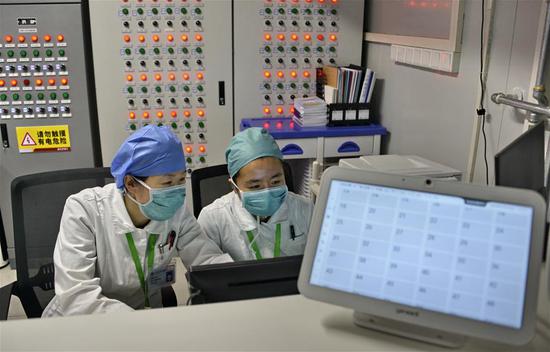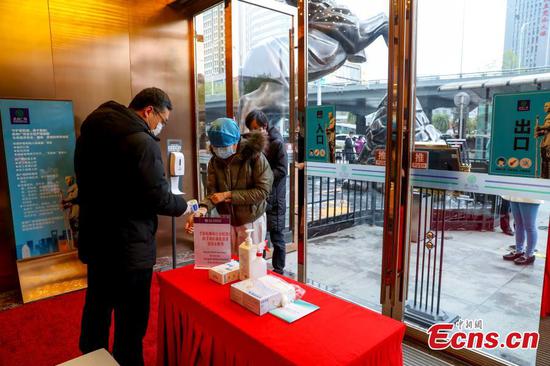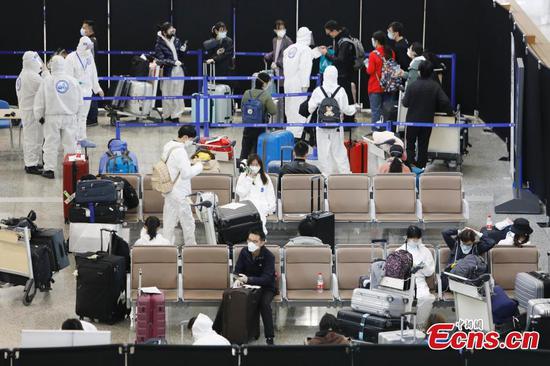Starting from April 1, Chinese health authorities will publish the details of asymptomatic COVID-19 patients every day, amid public concerns that these patients may cause further infections.
Officials from the National Health Commission announced on Tuesday's press conference that it has asked local governments to register and report asymptomatic cases and their close contacts within 24 hours.
A total of 1,541 asymptomatic patients are under medical observation in China as of Monday, of whom 205 are imported cases, the official said.
Asymptomatic patients will be quarantined collectively for 14 days and undergo two nucleic acid tests. If the nucleic acid test remains positive, isolated medical observation will be continued. People who have had close contact with them are also required to be quarantined for 14 days, said Chang Jile, director of the disease control and prevention bureau with the commission.
Asymptomatic patients are defined as those who have no clinical symptoms but test positive for COVID-19, according to the standard issued by the National Health Commission.
So far, asymptomatic patients are not counted as "confirmed cases" in China.
Monitoring has shown that asymptomatic patients are mainly discovered from four channels: medical observation of people who have had close contact with COVID-19 patients, investigation of cluster epidemics, tracking of infection sources, and tests on people who have had a travel history or residence history in epidemic areas at home or abroad.
Premier Li Keqiang emphasized enhanced COVID-19 prevention and control work, especially prevention against asymptomatic patients, at a meeting on Monday.
Asymptomatic patients will be counted as confirmed cases once they start to show clinical symptoms and should be sent to designated hospitals for treatment, Chang said.
However, if a person starts to show symptoms during quarantine, he or she could not be considered as an asymptomatic carrier from the beginning, some experts noted.
Counting those in incubation periods as asymptomatic carriers would confuse the public and increase occurrence rates of asymptomatic carriers, according to experts.
Asymptomatic carriers are different from those in an incubation period, as the latter, no matter how long the incubation period, will eventually show an onset later on, Wang Guangfa, a leading Chinese respiratory expert at Peking University's First Hospital in Beijing, told the Global Times on Tuesday.
The latter group are easier to discover as they start to show symptoms and their infectivity is higher than asymptomatic carriers, Wang said.
A confirmed COVID-19 patient can on average infect three people. Wang estimated that propagation coefficients of an asymptomatic carrier would be lower than three.


















































